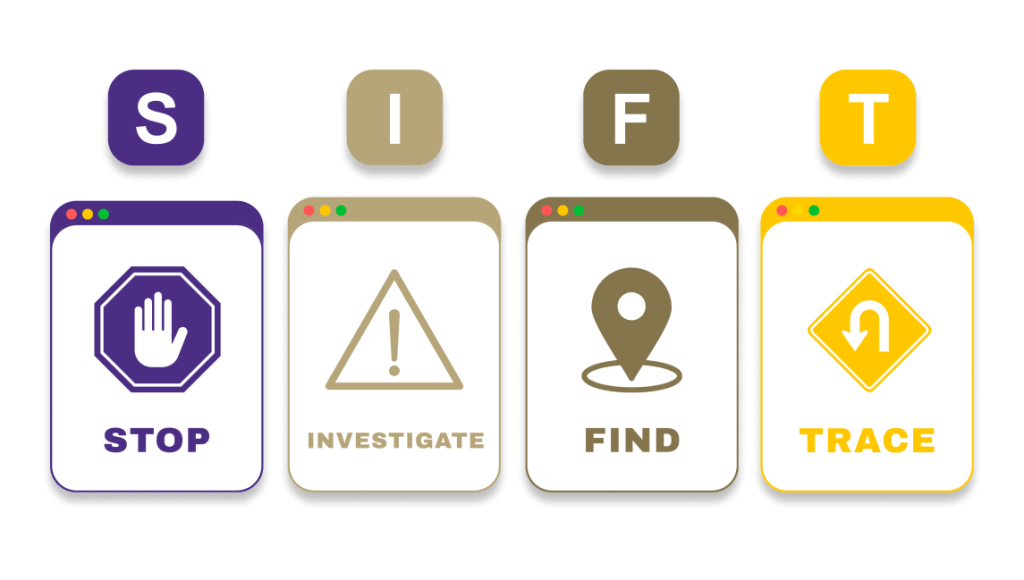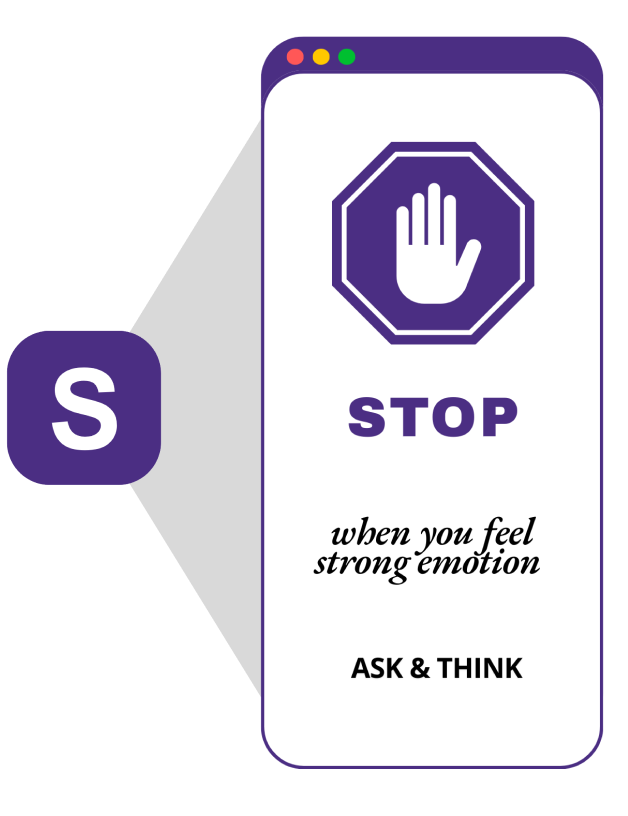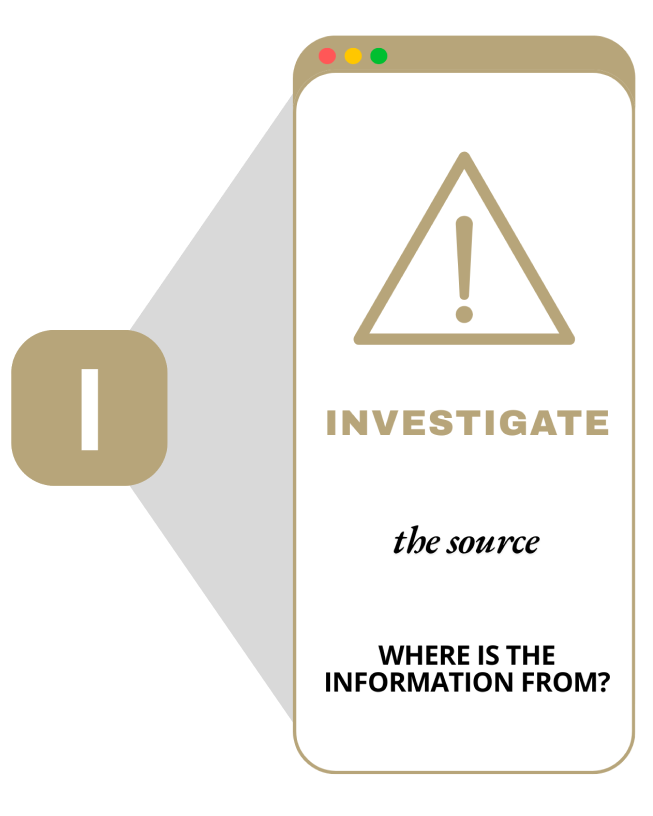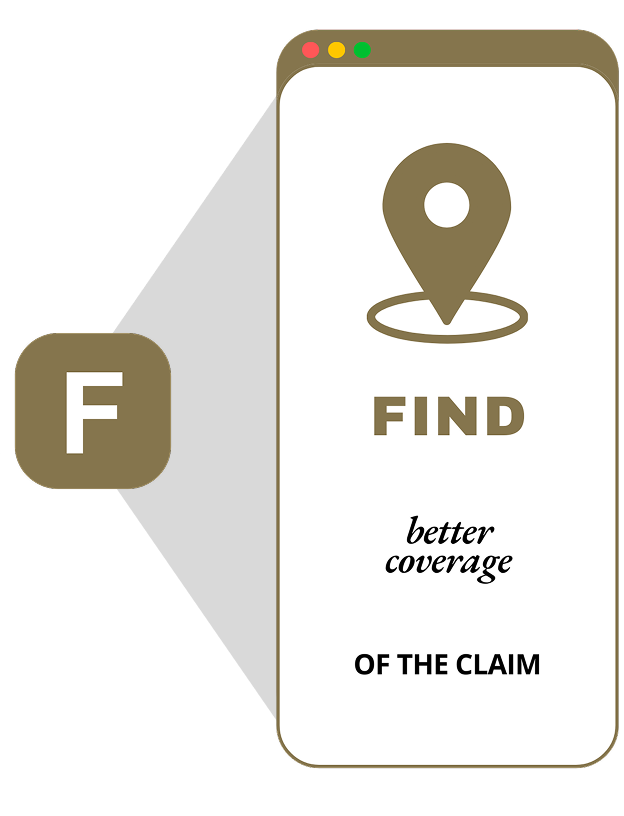
Find Trustworthy Information

The SIFT method helps you quickly verify if information online is credible. Whether you’re looking at a social media post, a website, or an email, SIFT takes you through 4 easy steps to investigate your source, find better information about your topic, and trace a claim back to its original context. It helps you understand the context and origin of the information, so you can effectively evaluate its trustworthiness. SIFT, developed by Mike Caulfield, is a set of easy-to-learn habits that will save you time and help you select high quality sources of information.
Watch this first!
SIFT is a method of lateral reading, a media literacy strategy that requires to you to use other sources to determine the trust-worthiness of a claim – instead of simply staying on a site or page. This video gives an overview of the basics of lateral reading. Below, you will learn how to use the SIFT method to take you through four important lateral reading steps.


Step 1
Don’t read it or share it until you know what it is.
Strong emotions are a signal to stop.
Ask yourself:
- Do I recognize this source?
- Is it something I know I can trust?
- Is it making me feel a strong emotion?
If you’re not sure, use the other moves to get a sense of what you’re looking at.

More:
Overview from the BCC of the SIFT method
How does information spread? Learn more about why fact-checking internet sources is important from this brief online lesson from Poynter’s Be MediaWise.


Step 2
Investigate the source. Know what you’re reading before you read it.
Use Google, fact checking websites, and/or Wikipedia to find out more about the source of information.
- What is the source, exactly? Is it a news article, a blog post, a government report, etc.?
- Who wrote or created this source?
- Who published this source?
- What is the purpose in publishing this source? To inform? To entertain? To make you feel feelings?
Just add “Wikipedia” to any search (i.e., “American Association of Pediatricians Wikipedia”) to get a consensus point of view of the source. Don’t worry about doing extensive research into your sources. This is a quick check of the expertise and agenda of a source’s creators, and it should only take around 1-2 minutes.
Watch Video 2:
Learn from SIFT creator Mike Caulfield, in a video from Ctrl+F, how and why to use Wikipedia to investigate the source of a claim.
Both sound legitimate, but one isn’t!

UNRELIABLE

RELIABLE

This website looks like news, but it’s actually satire.

More:
Civic Online Reasoning explains more ways to use Wikipedia Wisely.
What makes a source reputable? An online lesson from Be MediaWise.


Step 3
Find better coverage. Sometimes the article or video you found doesn’t matter as much as the claim it’s making. Knowing whether a claim is widely accepted or still hotly debated provides more context for you to use as you evaluate it.
- Can you find at least one, but preferably more, trusted source that’s reporting on the claim?
- Do all the sources seem to agree on the claim?
- Is there controversy around it, with different sources making conflicting arguments?
Trading up (Google your story and hit the News tab to find better sources; or add your favorite fact checking site after your story name in your search to float those articles to the top)
Watch Video 3:
When finding better coverage of a claim, it is important to know that the search results at the top aren’t always the best! iCivics explains the importance of practicing “click restraint.”

Random photo you found online


BBC article confirming
snow in Sahara

YouTube video that come
across your feed


Britannica Encyclopedia article on The Great Molasses Flood

More:
How to use Google’s “the three dots” to help you assess the reliability of websites.
Where can you find accurate information? Learn more in this online lesson from Poynter’s Be MediaWise.


Step 4
Trace claims, quotes, media to the original context. Track the facts or data back to the original source or another secondary source to make sure they weren’t taken out of context. Some things to consider:
- A video shows two people fighting. Is there a longer version? Was part of the video deleted? What happened before filming started?
- News articles reporting on new research may, intentionally or unintentionally, misinterpret the research. Find the article and read it yourself.
- A photograph may be real, but may be presented with a falsified caption. Do a reverse image search to see where it really came from.
The context in which something happened or information was created influences its meaning, but many things online are taken out of context for a variety of reasons. Understanding that original context will help you evaluate your information effectively.
Watch Video 4:
This video from Google, created for the Public Libraries Association (PLA) Super Searchers Program, demonstrates techniques on how to trace claims, quotes, and media.

Find information of the original source!

This image showed up on social media after Hurricane Milton, but it’s actually from a water ride at Disney!

More:
Step-by-step instructions on how to use Google Reverse Image Search
How do you know it’s not AI? Understand steps you can take to determine if something you see online was created by Artificial intelligence from Be MediaWise.
Taking a Deeper Dive
Check out these other online resources:

Web Literacy for Student Fact Checkers
An online book by Mike Caulfield – much more in depth into each of the 4 Moves.

